



Chhattisgarh’s economy has scripted a turnaround of sorts in recent years. The state that once had nearly 30 percent of its population under multidimensional poverty has reduced that figure to 16.37 percent in just five years and has kept its fiscal deficit under check. But the Congress party’s Bhupesh Bhagel-led state government is also battling accusations of failure in the proper implementation of central government schemes.
The state saw a tight bipolar contest between the incumbent Congress and the Bharatiya Janata Party during the 2023 Assembly elections.
Here’s a snapshot of Chhattisgarh’s economy in charts to give you an idea of how the state has fared in recent years.
Although the Covid-19 pandemic had an impact on the state’s economy, it seems to have largely been able to recover. While FY20, which was marked by the beginning of the pandemic, saw a considerable decline in the growth of Chhattisgarh’s GDP—as it came down to just 2.76 percent—FY21 saw it contract 1.8 percent. But the state has scripted a turnaround with decent growth in the last two years.
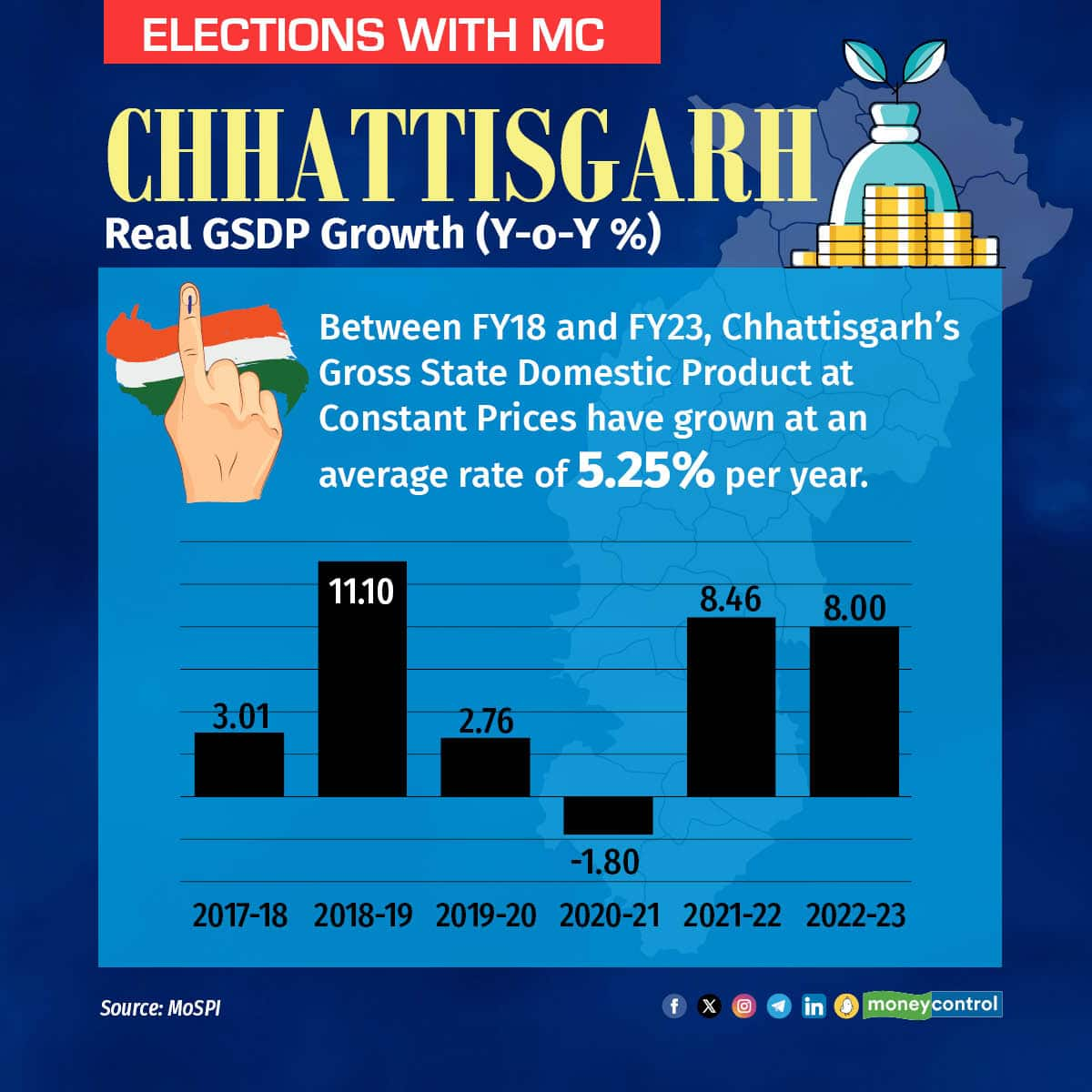
Due to a favourable base effect and the reopening of the economy, the state’s GDP showcased a remarkable growth recovery in FY22 at 8.46 percent. But there has been a marginal decline in growth in FY23, as can be seen from the chart above.
What stands in Chhattisgarh's favour is its relatively low fiscal deficit. The state government has been able to contain its fiscal deficit within its targets in recent years. In FY23, the state had a fiscal deficit of 3.17 percent against a target of 3.33 percent. And if government estimates are to be believed, it will be able to do so in the current fiscal year as well.
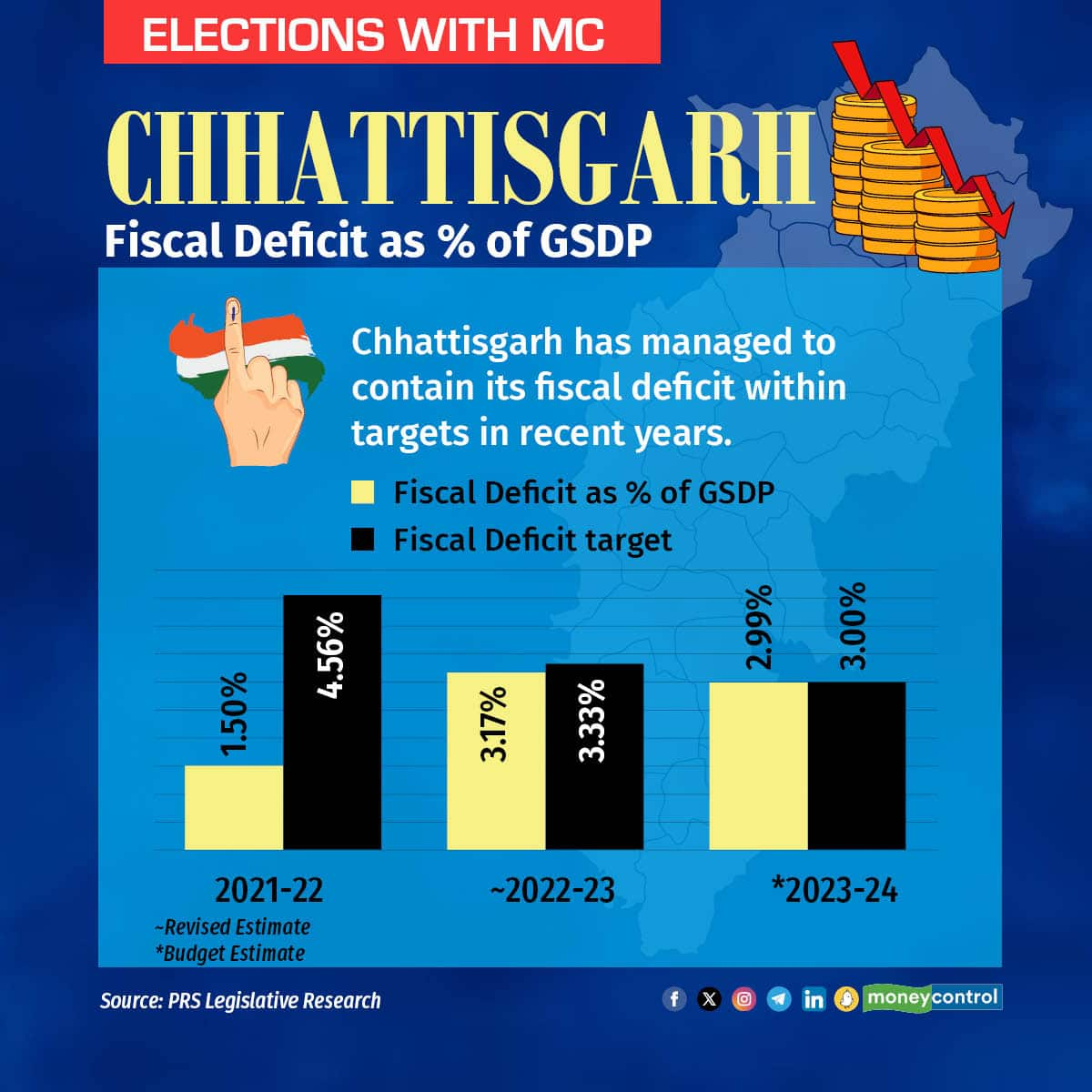
The state’s overall unemployment rate at 2.5 percent also stands lower than the national figure, according to Periodic Labour Force Survey data from 2022-23. However, it needs to be noted that estimates from the first quarter of the current fiscal year places Chhattisgarh’s urban unemployment rate at 11.2 percent, higher than the national average of 6.7 percent.
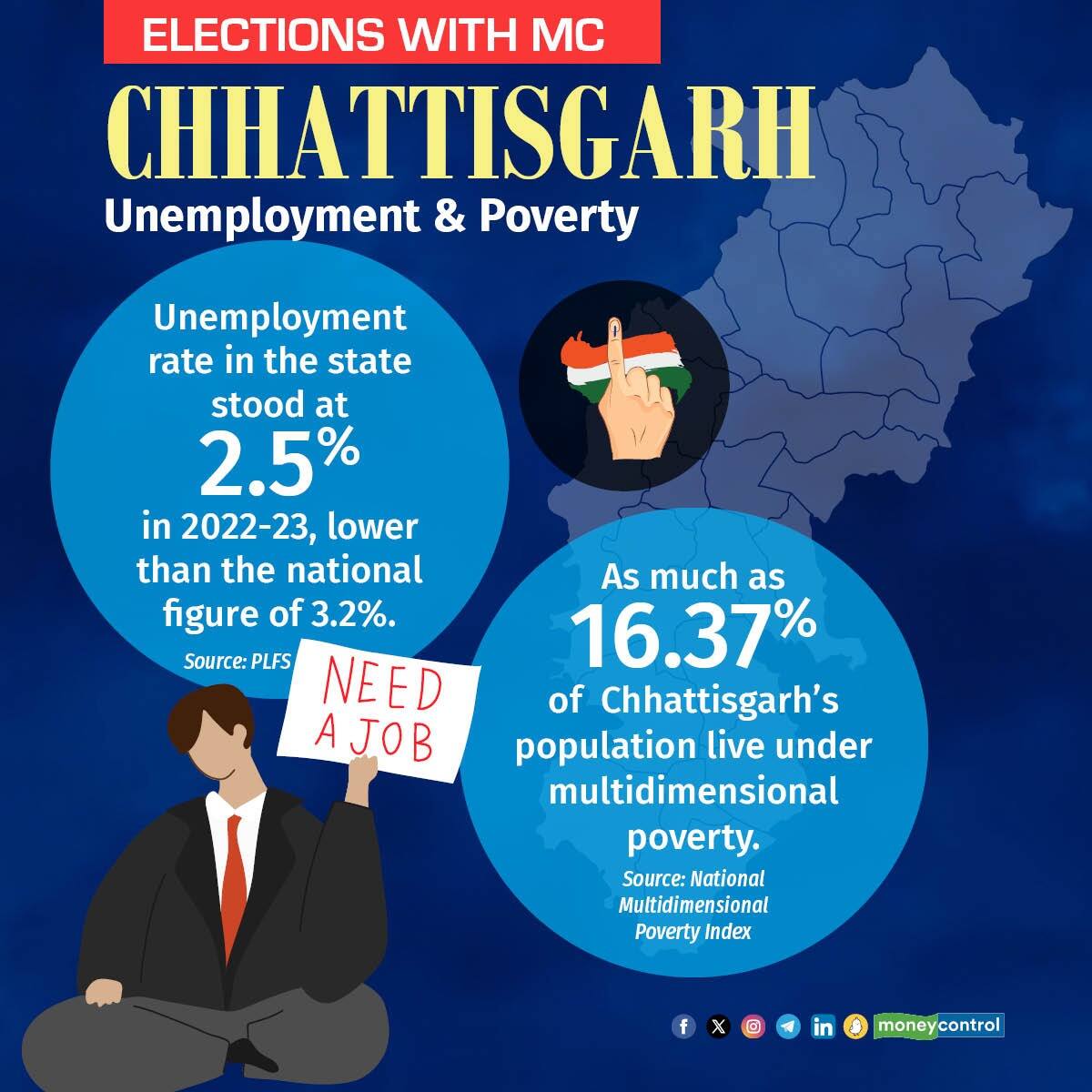
There has been a marked decline in poverty in Chhattisgarh, with an estimated 4 million people being lifted out of it between 2015-16 and 2019-21. However, indigence still remains relatively high in the state, with more than a quince of the population still living under multidimensional poverty. Chhattisgarh ranks seventh among states for the percentage of the population living under multidimensional poverty.
On a positive note, Chhattisgarh’s per capita income remains higher at Rs 1,33,898 than the national average of Rs 91,481. Moreover, estimates show that it has seen a rise between FY21 and FY22.
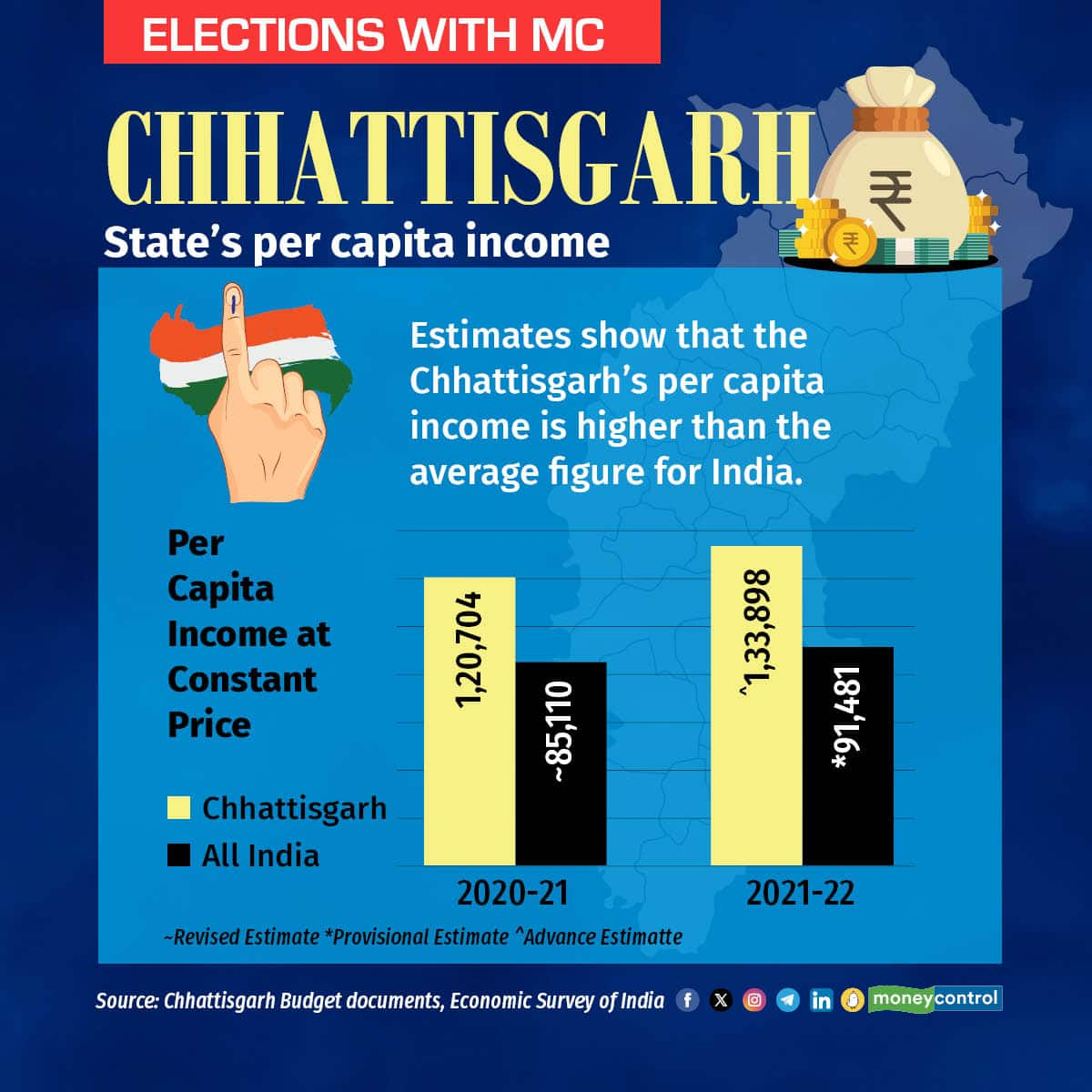
The state also has largely managed to keep a lower inflation rate at xx in xx—lower than the national average over the recent years, albeit seeing a break in the trend in FY21.
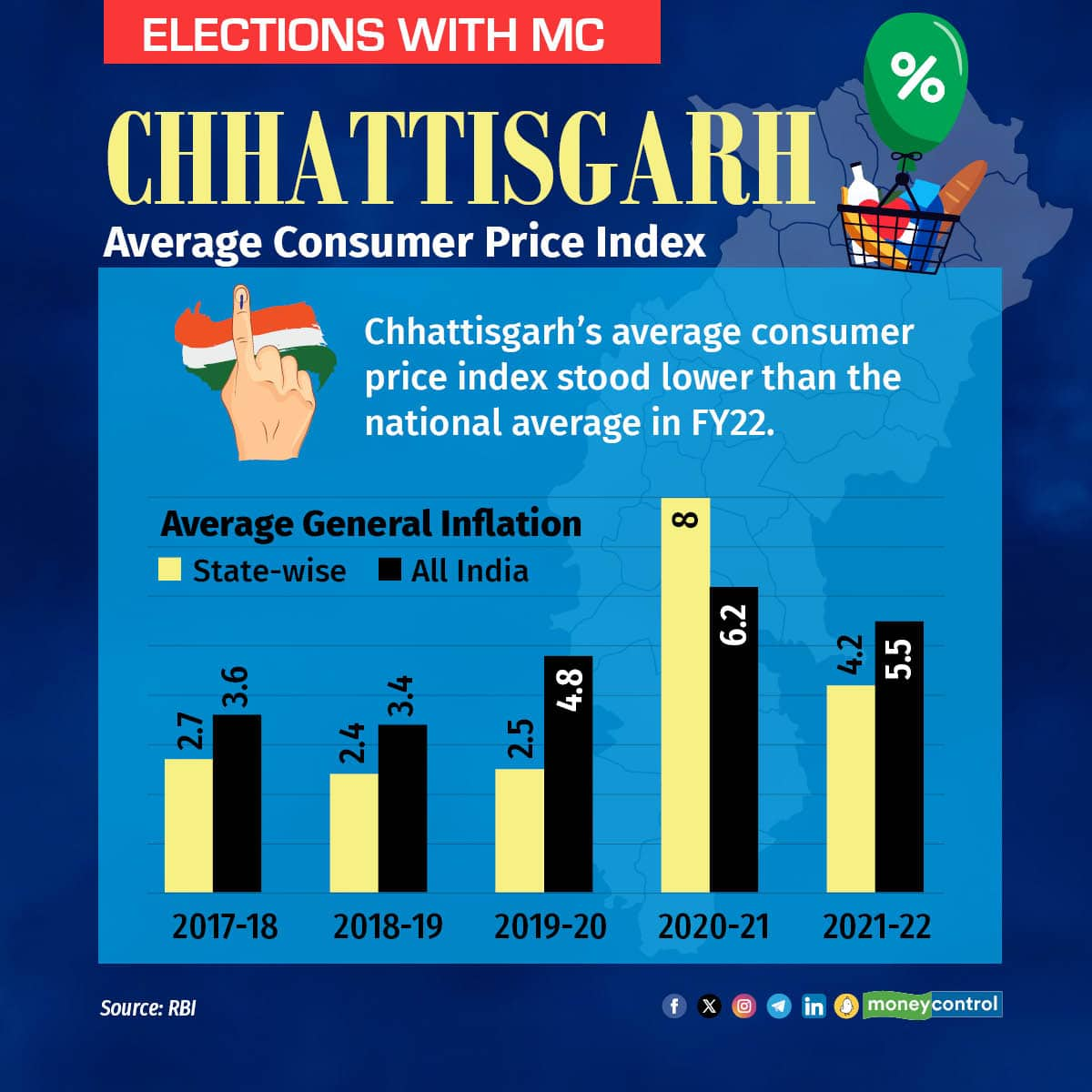
Analysis of the segment-wise growth of the state’s economy shows that the services sector has been leading the state’s growth, recording a jump of 9.2 percent, while manufacturing grew 7.1 percent and agriculture 7.8 percent in FY23.
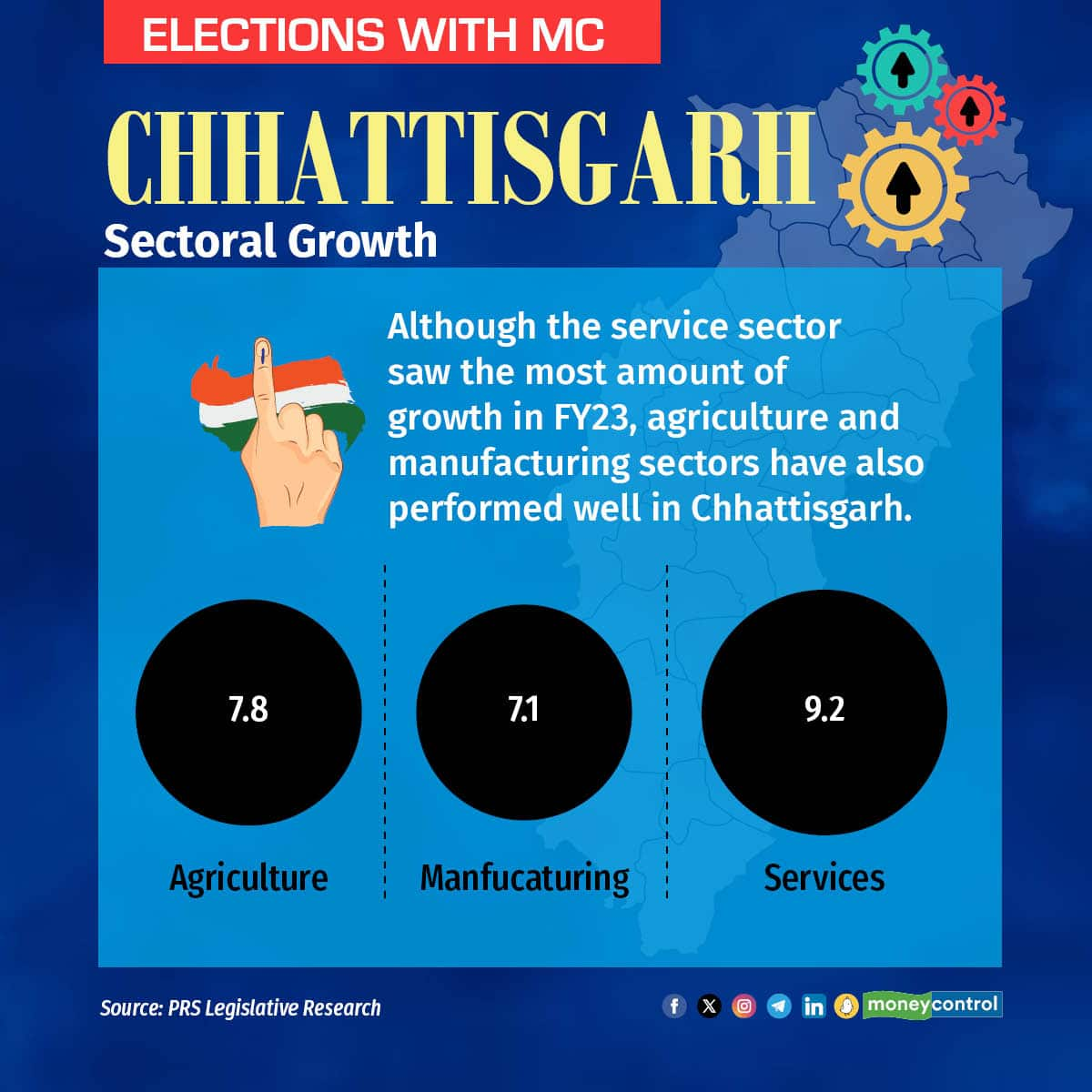
However, much remains wanting in Chhattisgarh’s startup ecosystem. According to data from the Department for Promotion of Industry and Internal Trade, the state ranks only 16th in the country for the number of recognised startups at 871, making it one of the worst performers among major states. Telangana, another major state that has elections scheduled next month has 4,426 startups. Rajasthan (2,731 startups) and Madhya Pradesh (2,515 startups), two other major states with elections in November, also have fared better.
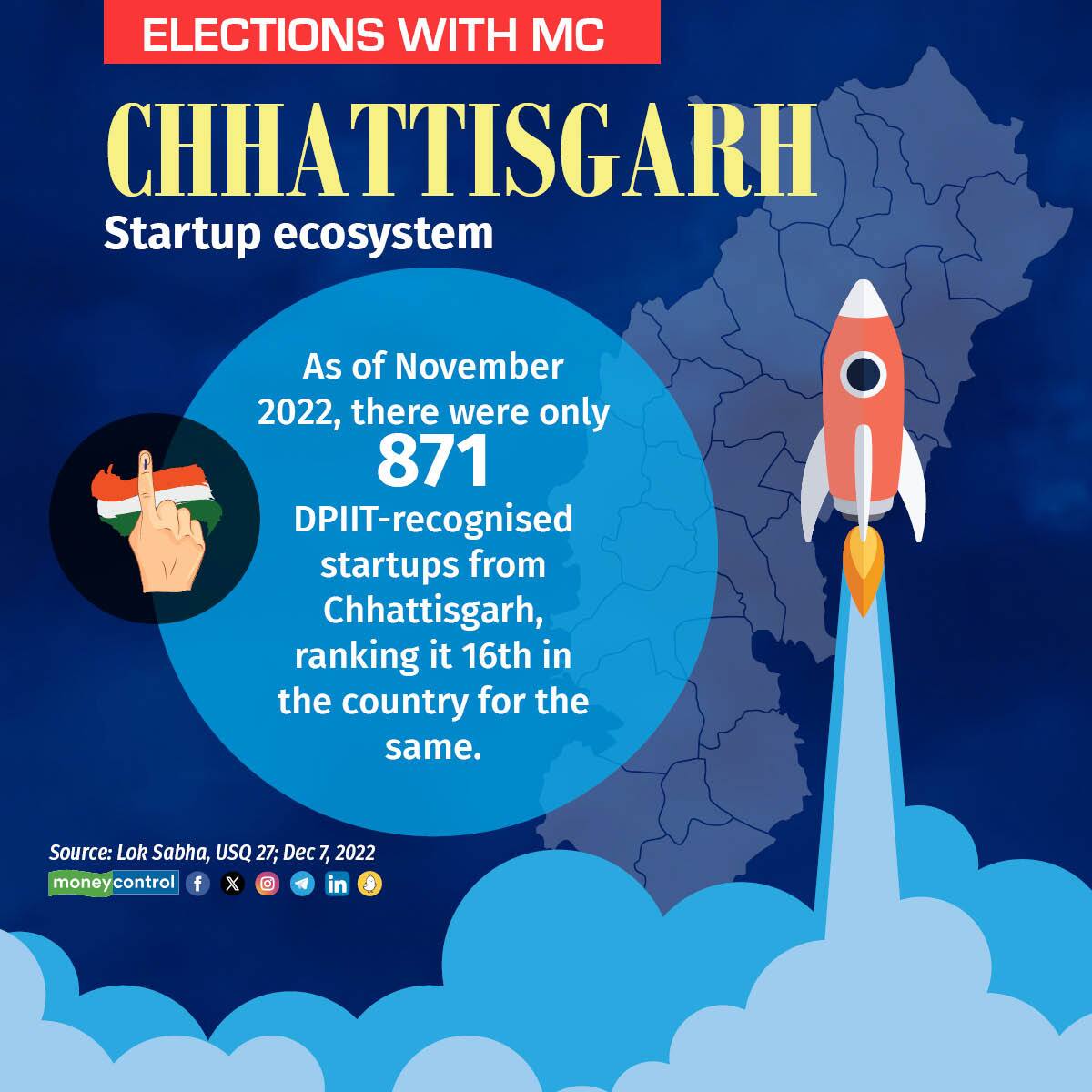
Similarly, digital penetration remains pretty low as well. Nearly half of the state’s population lacks access to the internet, as its tele density at 52.14 percent is much lower than the national average of 63.53 percent, as seen from the chart below.
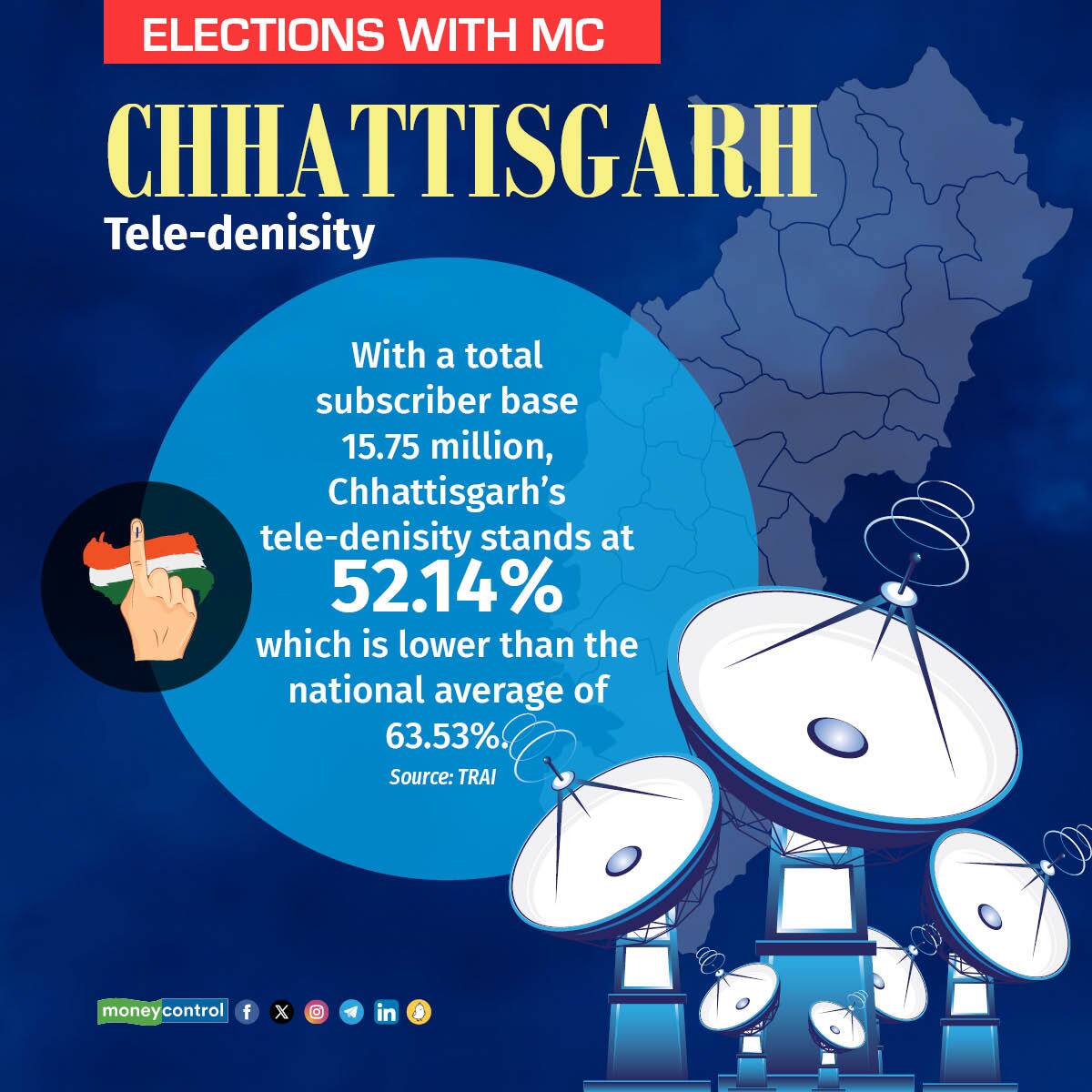
Coming to central government schemes, Chhattisgarh has around 17.06 million Jan Dhan accounts, and a vast majority of them are from rural areas. Official data shows that these accounts currently hold a balance of more than Rs 6,227 crore.
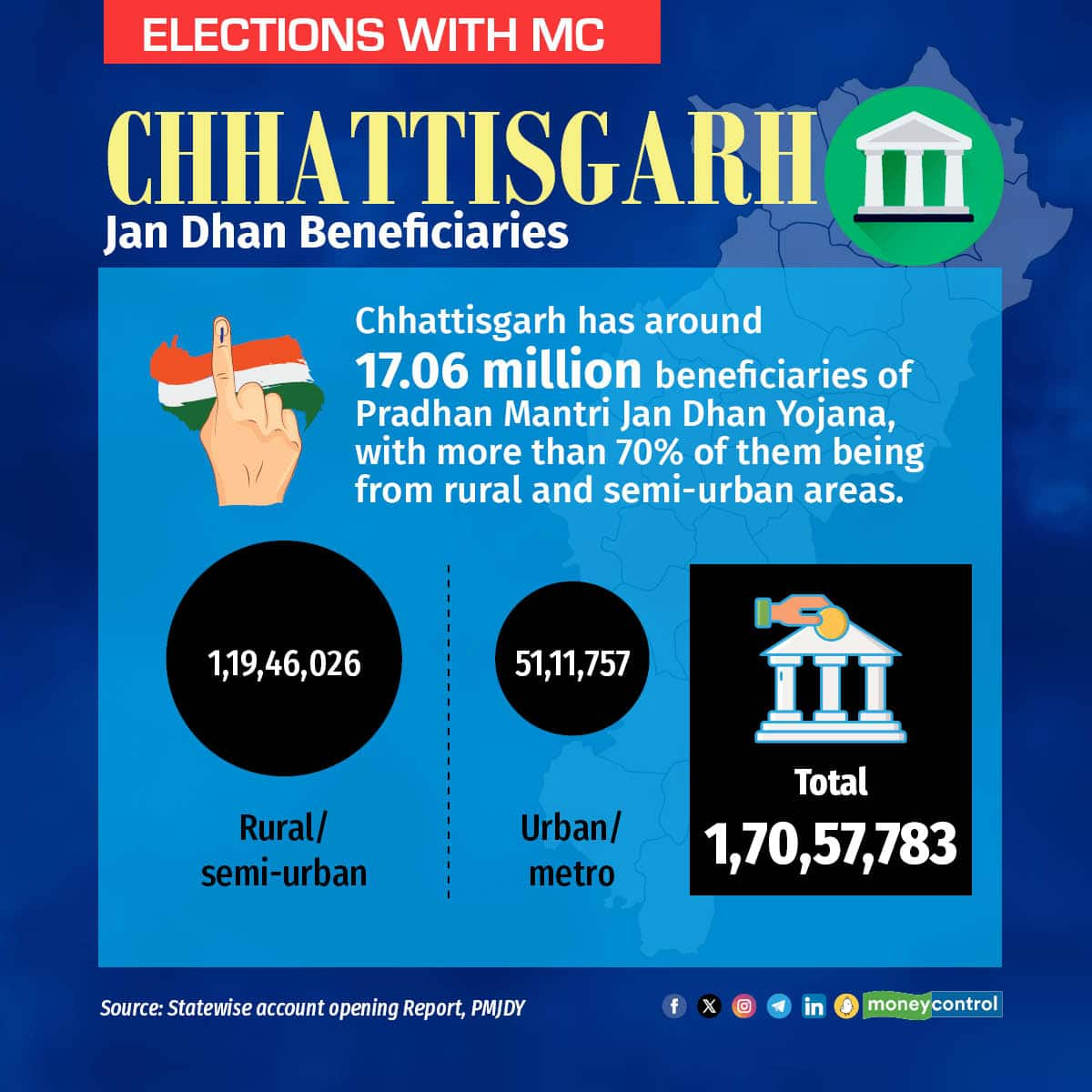
More than 1.11 million houses have been built in the state under the Pradhan Mantri Awas Yojana since FY17. However, there has been a decline in the number of houses built since FY20, prompting the opposition in Chhattisgarh to accuse the incumbent state government of failing to properly implement the scheme. For context, only 32,590 rural homes were built under the scheme in FY23, down from 365,867 rural houses built in FY18.

Coming to state government schemes, Chhattisgarh has been announcing numerous populist measures in recent months. One of the most popular schemes is the Rajiv Gandhi Kisan Nyay Yojana under which farmers growing crops such as rice, sugarcane and maize are given up to Rs 13,000 per acre as input subsidy.

Meanwhile, in a move thought to dispel resentment against the rise in unemployment in the state, Chhattisgarh also started an Unemployment Allowance Scheme this year. Under this, educated unemployed youth from economically poorer families are given a monthly allowance of Rs 2,500. The beneficiaries are also given skill development training to improve their employment prospects.
Discover the latest Business News, Sensex, and Nifty updates. Obtain Personal Finance insights, tax queries, and expert opinions on Moneycontrol or download the Moneycontrol App to stay updated!
Find the best of Al News in one place, specially curated for you every weekend.
Stay on top of the latest tech trends and biggest startup news.